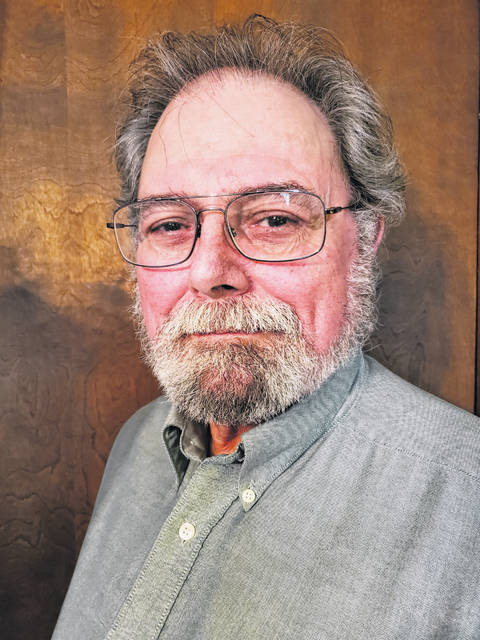
Editor’s note: This is part two of a three-part series on Memorial Day.
Gettysburg, Pennsylvania: The 1863 cemetery dedication at Gettysburg, Pennsylvania, included a ceremony of commemoration at the graves of dead soldiers. Some have therefore claimed that President Abraham Lincoln was the founder of Memorial Day. However, Chicago journalist Lloyd Lewis tried to make the case that it was Lincoln’s funeral that spurred the soldiers’ grave decorating that followed.
Boalsburg, Pennsylvania: On July 4, 1864, ladies decorated soldiers’ graves according to local historians in Boalsburg, Pennsylvania. Boalsburg promotes itself as the birthplace of Memorial Day. However, no reference to this event existed until the printing of the History of the 148th Pennsylvania Volunteers in 1904. In a footnote to a story about her brother, Mrs. Sophie (Keller) Hall described how she and Emma Hunter decorated the grave of Emma’s father, Reuben Hunter. The original story did not account for Reuben Hunter’s death occurring two months later on Sept. 19, 1864. It also did not mention Mrs. Elizabeth Myers as one of the original participants. However, a bronze statue of all three women gazing upon Reuben Hunter’s grave now stands near the entrance to the Boalsburg Cemetery. Although July 4, 1864 was a Monday, the town now claims that the original decoration was on one of the Sundays in October 1864.
National Decoration Day proclamation: On May 5, 1868, Gen. John A. Logan issued a proclamation calling for “Decoration Day” to be observed annually and nationwide; he was commander-in-chief of the Grand Army of the Republic (GAR), an organization of and for Union Civil War veterans founded in Decatur, Illinois. With his proclamation, Logan adopted the Memorial Day practice that had begun in the southern states three years earlier. The northern states quickly adopted the holiday. In 1868, memorial events were held in 183 cemeteries in 27 states, and 336 in 1869. One author claims that the date was chosen because it was not the anniversary of any particular battle. According to a White House address in 2010, the date was chosen as the optimal date for flowers to be in bloom in the North.
Michigan state holiday: In 1871, Michigan made “Decoration Day” an official state holiday and by 1890, every northern state had followed suit. There was no standard program for the ceremonies, but they were typically sponsored by the Women’s Relief Corps, the women’s auxiliary of the Grand Army of the Republic (GAR), which had 100,000 members. By 1870, the remains of nearly 300,000 Union dead had been reinterred in 73 national cemeteries, located near major battlefields and thus mainly in the South. The most famous are Gettysburg National Cemetery in Pennsylvania and Arlington National Cemetery, near Washington, D.C
Waterloo, New York proclamation: On May 26, 1966, President Lyndon B. Johnson designated an “official” birthplace of the holiday by signing the presidential proclamation naming Waterloo, New York, as the holder of the title. This action followed House Concurrent Resolution 587, in which the 89th Congress had officially recognized that the patriotic tradition of observing Memorial Day had begun one hundred years prior in Waterloo, New York. The village credits druggist Henry C. Welles and county clerk John B. Murray as the founders of the holiday. Scholars have determined that the Waterloo account is a myth. Snopes and Live Science also discredit the Waterloo account. Early national history: In April 1865, following Lincoln’s assassination, commemorations were widespread. The more than 600,000 soldiers of both sides who died in the Civil War meant that burial and memorialization took on new cultural significance. Under the leadership of women during the war, an increasingly formal practice of decorating graves had taken shape. In 1865, the federal government also began creating the United States National Cemetery System for the Union war dead.
By the 1880s, ceremonies were becoming more consistent across geography as the GAR provided handbooks that presented specific procedures, poems, and Bible verses for local post commanders to utilize in planning the local event. Historian Stuart McConnell reports: on the day itself, the post assembled and marched to the local cemetery to decorate the graves of the fallen, an enterprise meticulously organized months in advance to assure that none were missed. Finally came a simple and subdued graveyard service involving prayers, short patriotic speeches, and music … and at the end perhaps a rifle salute.
Relationship to Confederate Memorial Day, Confederate Memorial Monument in Montgomery, Alabama.
In 1868, some southern public figures began adding the label “Confederate” to their commemorations and claimed that northerners had appropriated the holiday. The first official celebration of Confederate Memorial Day as a public holiday occurred in 1874, following a proclamation by the Georgia legislature. By 1916, 10 states celebrated it, on June 3, the birthday of CSA President Jefferson Davis. Other states chose late April dates, or May 10, commemorating Davis’ capture.
The Ladies’ Memorial Association played a key role in using Memorial Day rituals to preserve Confederate culture. Various dates ranging from April 25 to mid-June were adopted in different southern states. Across the South, associations were founded, many by women, to establish and care for permanent cemeteries for the Confederate dead, organize commemorative ceremonies, and sponsor appropriate monuments as a permanent way of remembering the Confederate dead. The most important of these was the United Daughters of the Confederacy, which grew from 17,000 members in 1900 to nearly 100,000 women by World War I. They were “strikingly successful at raising money to build Confederate monuments, lobbying legislatures and Congress for the reburial of Confederate dead, and working to shape the content of history textbooks.”
By 1890, there was a shift from the emphasis on honoring specific soldiers to a public commemoration of the Confederate South. Changes in the ceremony’s hymns and speeches reflect an evolution of the ritual into a symbol of cultural renewal and conservatism in the South. By 1913, David Blight argues, the theme of American nationalism shared equal time with the Confederate.


